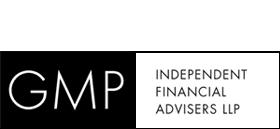Autumn Statement 2016 – what it means
November 23rd, 2016
Philip Hammond’s first Autumn Statement didn’t contain any major tax or pensions changes that have any immediate impact for you or your clients. This means advisers can plan for the tax year end with confidence and clarity.
There was welcome news that pension tax relief remains untouched. It appears that now is still not the time for a major pensions shake up, but it could be the perfect time to maximise funding and secure higher rate tax relief.
This will be the last Autumn Statement. In future the Budget Day will switch from spring to autumn, with a toned down statement on the economy delivered each March. This will give welcome breathing space between the announcement of budget changes and their introduction.
The key points from today’s statement were:
Reduced Money Purchase Annual Allowance
The Chancellor announced just one cut to pension allowances. The Money Purchase Annual Allowance (MPAA)is set to be cut from £10,000 to £4,000 from April 2017 (subject to consultation). This only affects those clients who have accessed their DC pension under the new pension flexibilities and continue to pay into their pension.
But what does accessing pension flexibility mean? With the right strategy, it doesn’t have to be an issue. Just taking the tax free cash out of a pension, without drawing an income, doesn’t trigger the reduced annual allowance. And anyone who was already in capped drawdown before 6 April 2015, and doesn’t exceed their ‘capped’ income limit, will also retain a £40k allowance.
For many clients, the first time they dip into their pensions will be the day they stop work. So a drop in their annual allowance is of no significance. But some may wish to phase their retirement, perhaps by cutting their working hours. These clients may still wish to continue funding or more importantly could be benefiting from employer contributions. They may need the best of both worlds – their full £40k AA and the option to dip into their pension savings if needed. And remember that if any of your clients have already accessed their pension flexibly, they could be tripped up by auto-enrolment.
Some older pension schemes may only offer Uncrystallised Pension Funds Lump Sums (UFPLS), where each withdrawal is fixed as 25% tax free cash and 75% taxable income. This will automatically trigger the cut to the £4k allowance. Being in a modern flexible pension which offers the full range of flexible income options can help by allowing just tax free cash to be taken and retaining the higher allowance.
Salary sacrifice remains a tax efficient choice for pension savers
There will be no changes to the funding of pensions via salary sacrifice. This is good news for pension savers, including all those who have chosen salary sacrifice as part of their auto-enrolment arrangements.
Certain other employee benefits will no longer receive the tax and NI advantages of salary sacrifice from April 2017, meaning they’ll be in the same position as other workers who buy benefits out of their net pay. This will include exchanges for benefits such car purchases, parking, school fees, gym memberships, travel insurance and smart phones, although there will be some protection for existing arrangements until April 2018 (2021 for cars and school fees).
Salary sacrifice allows employees to boost their pension pots through savings in employer and employee NI following an agreed reduction in pay. A higher rate taxpayer could increase their pension contribution by up to 18% by reinvesting their savings in employer and employee NI.
2017/18 income tax rates and bands confirmed
The increase in the personal allowance in 2017/18 is confirmed as £11,500 and the higher rate threshold will rise to £45,000. Increases are planned to £12,500 and £50,000 respectively by 2020.
Different bands will apply in Scotland as a result of devolved powers.
Remedy for bond gain pain – but prevention is better than cure
Investment bond owners who unwittingly face a large tax charge as a result of surrendering part of their bond will have a remedy from 6 April 2017.
Many bonds are set up with multiple identical segments for flexibility on encashment, allowing each segment to be cashed in independently. But a large surrender can also be taken from all the segments – which may lead to an unexpected chargeable gain which bears no resemblance to the actual investment performance.
As more bond providers adopt the ‘ABI best practice’ on surrenders, the number of cases slipping through the net and requiring rectification should be minimal. However, savers who find themselves in these circumstances will be able to apply to HMRC to have the gain recalculated on a ‘just and reasonable’ basis. Further detail on how this will work is expected in Finance Bill 2017.
You should seek professional advice on the most appropriate way to withdraw funds.

